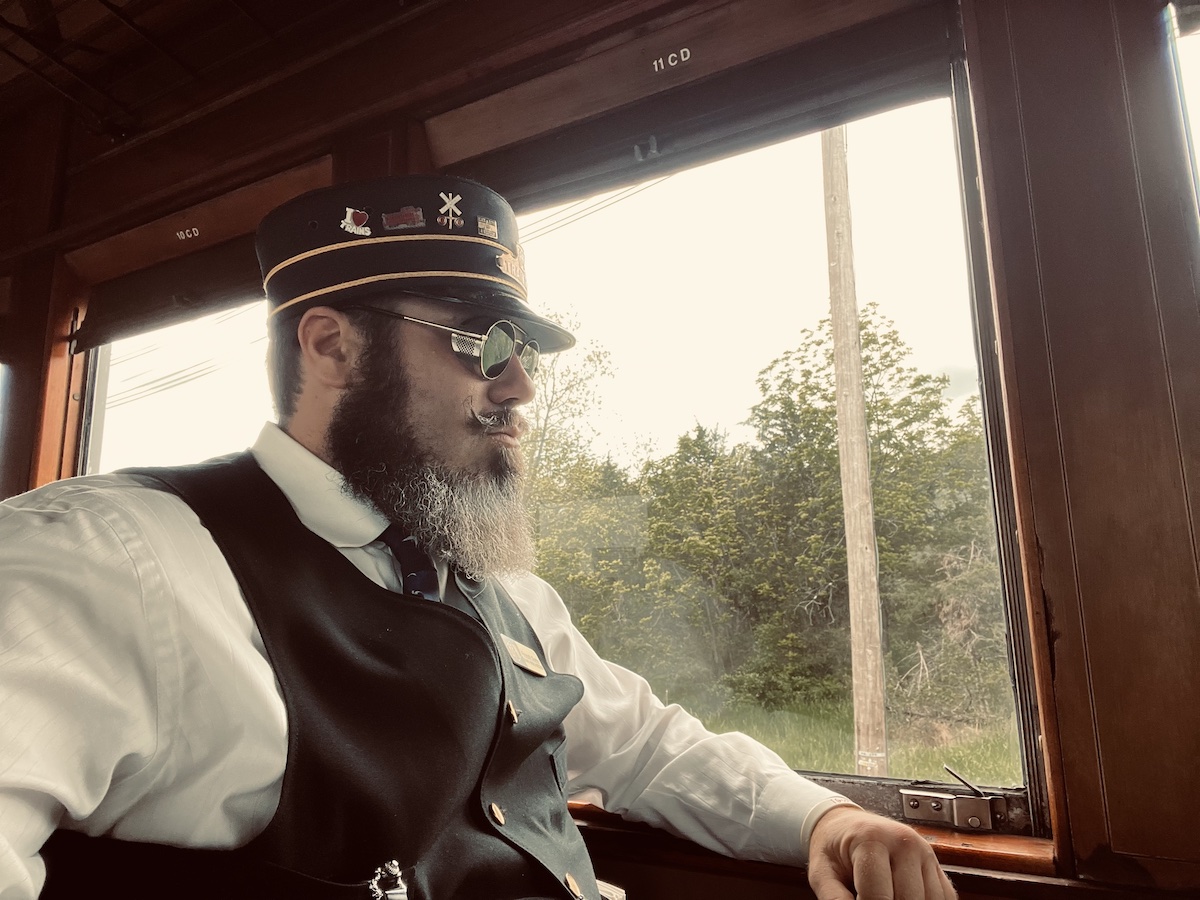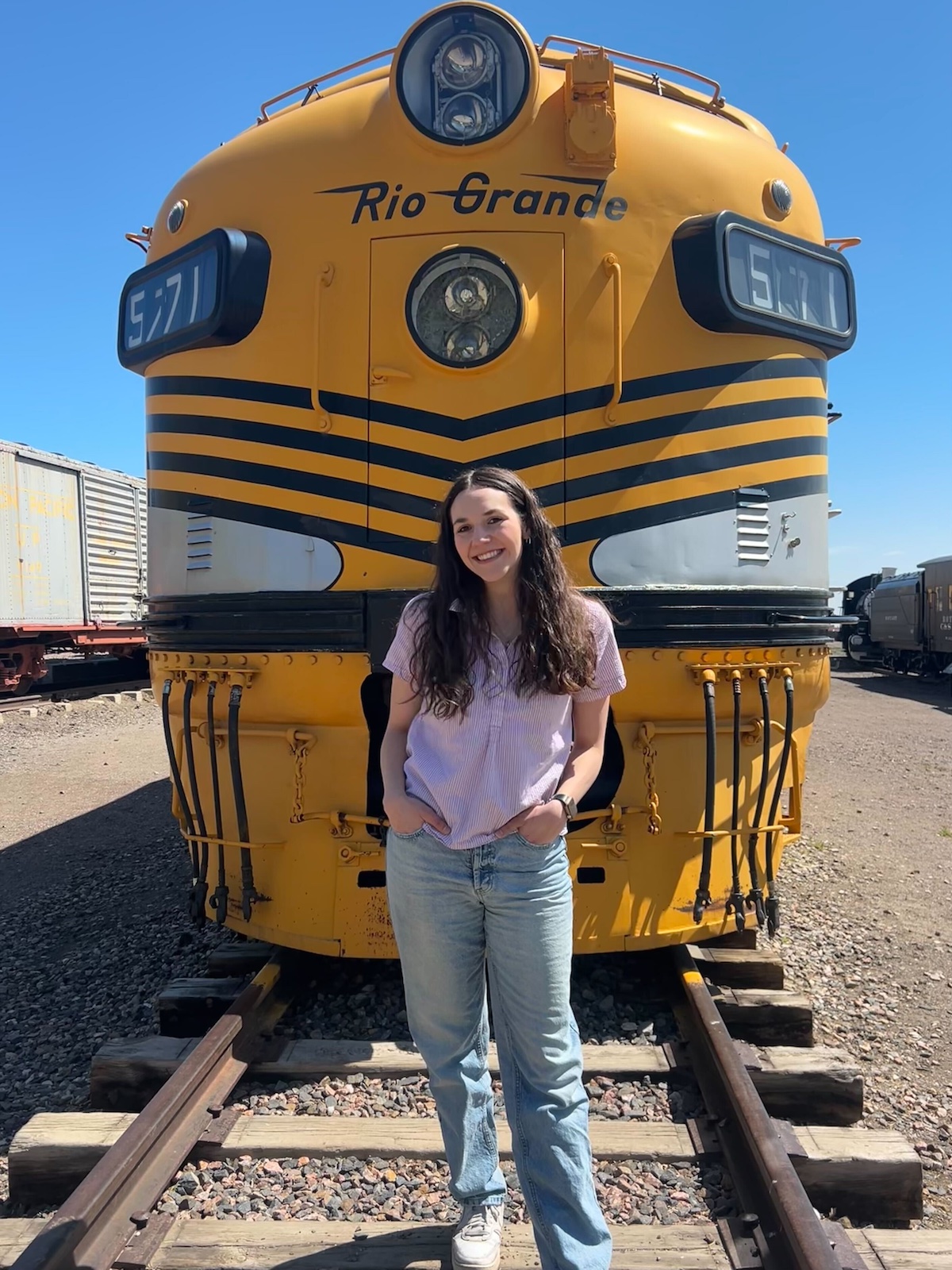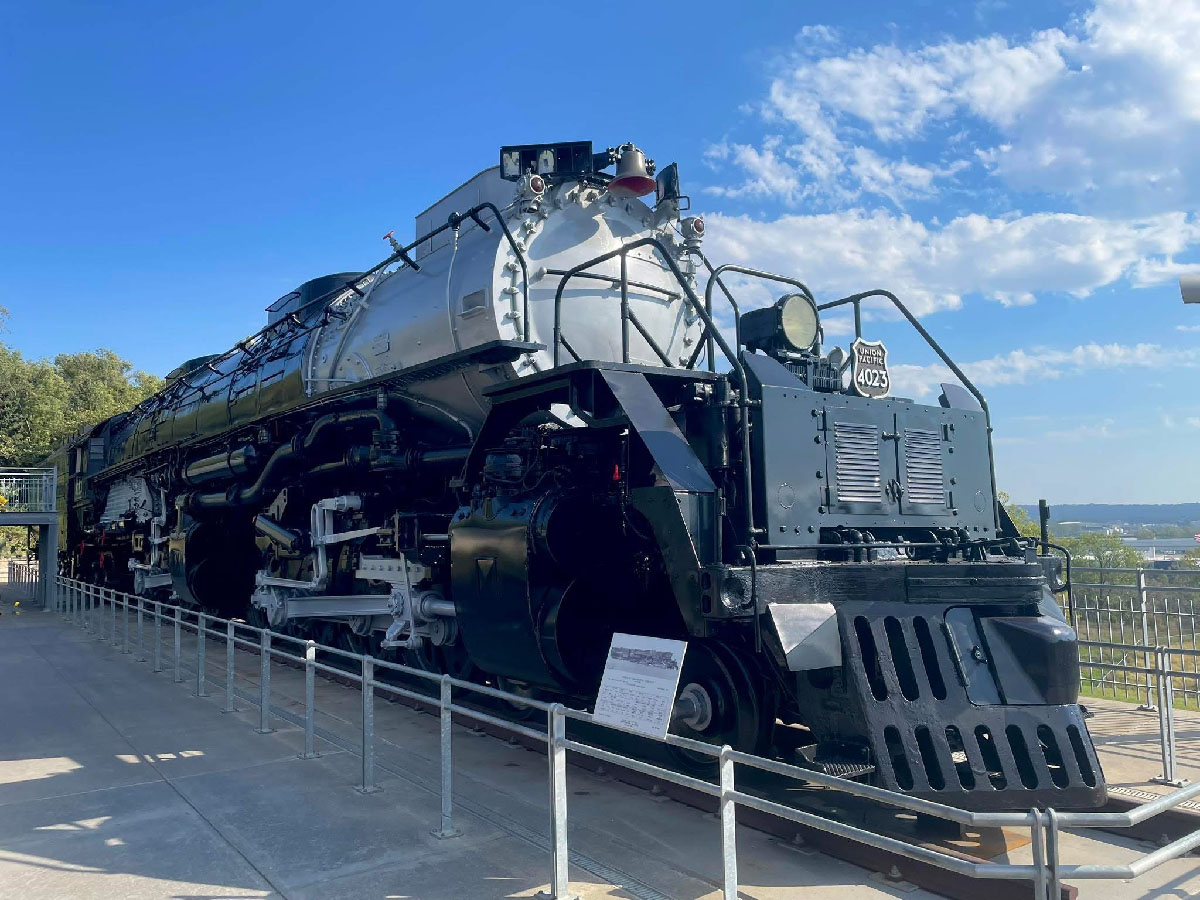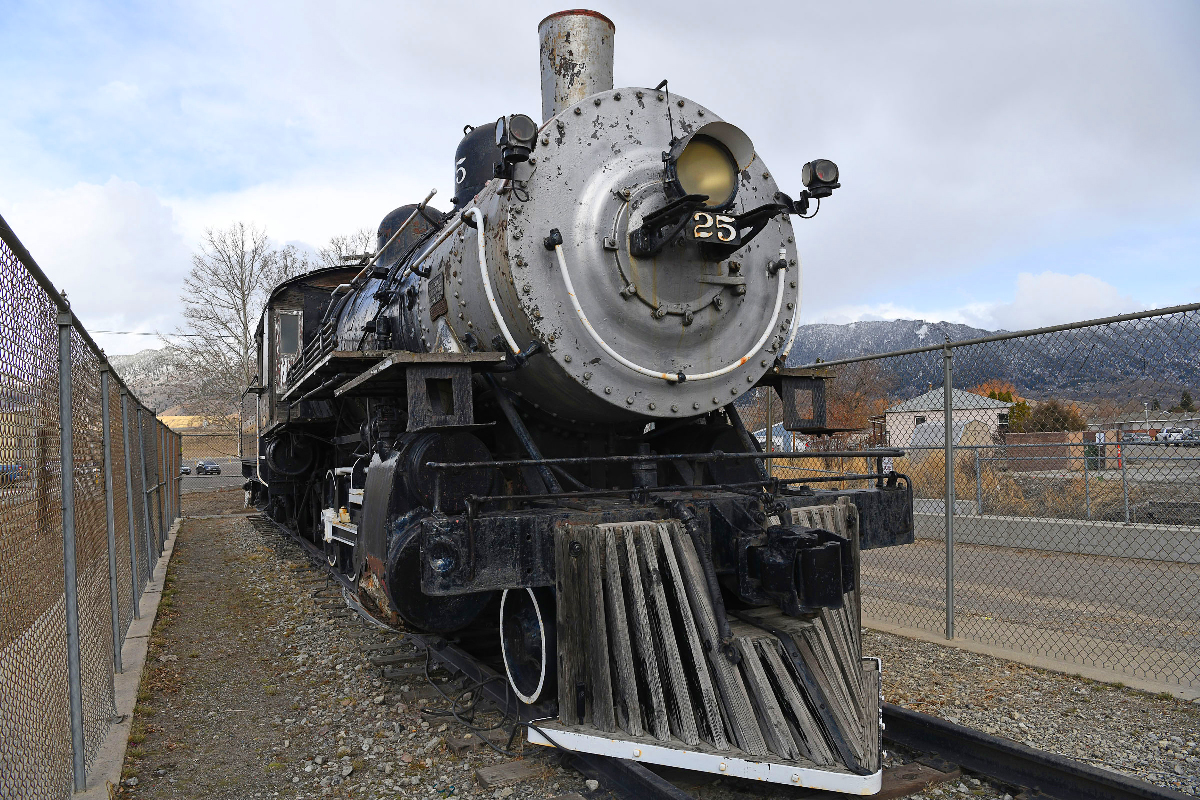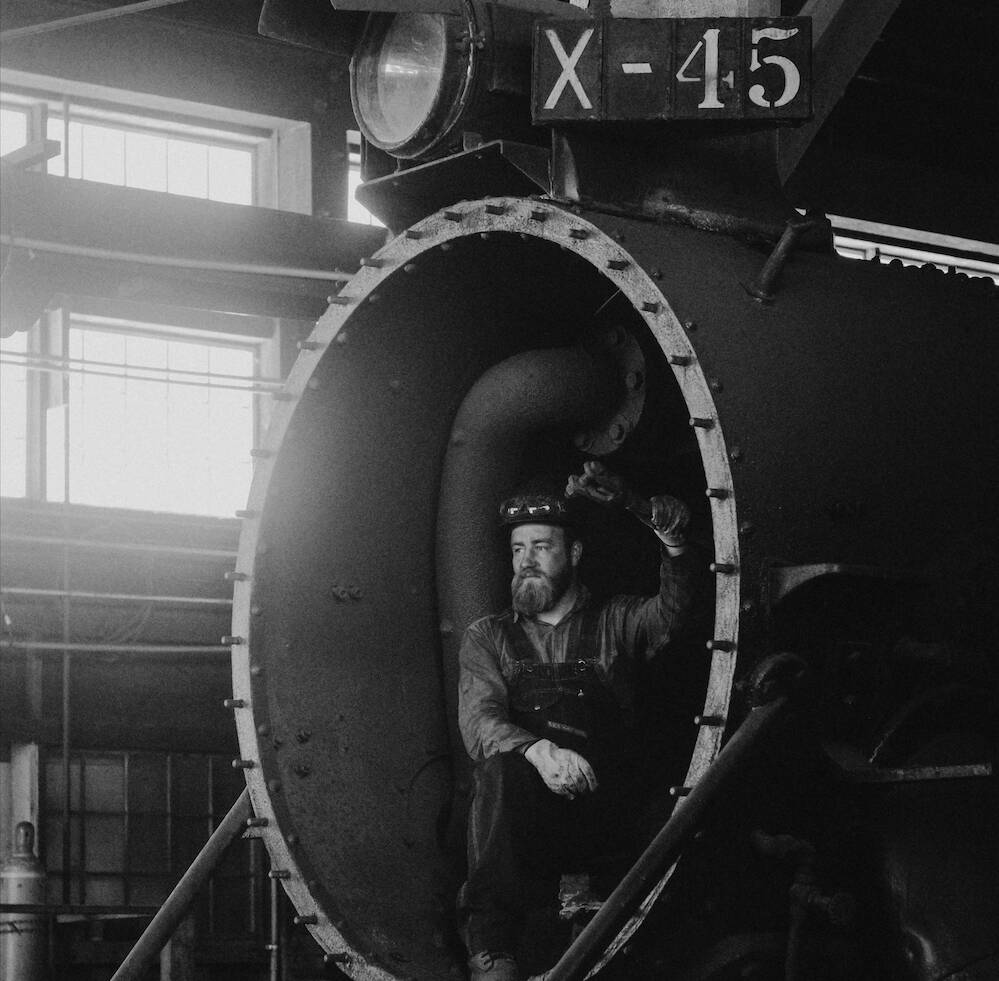
Kyle Colley has been part of the heritage railroad industry since birth, literally. The Durango, Colo., native was born to parents who both worked at the Durango & Silverton Narrow Gauge Railroad. After a childhood spent on and near the famed tourist train, Colley used the knowledge he gained to purchase a narrow-gauged Railway Post Office car, move up the ranks at the Grand Canyon Railway and land the job as steam specialist to the California Western Railroad in Fort Bragg, all by the age of 24.
How did you get involved in rail preservation?
Kyle Colley: I can attribute my love of the heritage railroad industry to my parents. I was born and raised in Durango, Colo., and my parents actually met working for the Durango & Silverton. My mom was the head concessionaire for a while and my dad was an engineer and fireman. Like him, I spent a lot of my free time and formative years growing up around that railroad and listening to all the old heads talk about the early days and the good “war stories” they had. As an imaginative person, it was very captivating to me living in this world as a child and listening to all these guys while giving me the opportunity to learn from their mistakes and successes.
You could technically say my professional railroad career started as an elf on the D&S Polar Express excursions. I would take it a step further by riding the train on my day off and answer questions for people, which the train crew found great appreciation for so they could focus on their job. I eventually made it into the operating department as an engineman and trainman, worked in the shop during the winters, and did a little bit with Rail Events Inc.
I was compelled [in 2020] to purchase Denver & Rio Grande Western Railroad RPO No. 119 after attending a few Railroad Passenger Car Alliance conferences. The car really needed attention and I struck a deal with the Durango & Silverton CMO and GM at the time, and they agreed to let it go. I bought it mainly as a way to teach myself carpentry and restoration techniques, but also to facilitate a community of people around the common goal of preserving the car.
After COVID, I decided it was time for a bit of a change. I went to the Grand Canyon Railway, which is kind of my family’s busman’s holiday, and quickly made it up to the general foreman position. Then, a fantastic opportunity came down the pipeline to come out here to California.
General manager Stathi Pappas is one of my friends from a while back when working at the Cumbres & Toltec Scenic Railroad, which I did during the 2018-2019 season. He got a job at the California Western and was needing people. So, I took a visit, really liked the area, and decided: “You know what, this will be a fun leap.”
As a young preservationist at age 24, what have you found to be the most challenging aspects in the industry?
Kyle Colley: A lot of it stems from general politics. I think, in many ways, there’s a lot with running a railroad that most people don’t really see. There are different entities involved – whether it be federal, legal, or personal – while keeping the show going and the wheels rolling that many take for granted and don’t really appreciate. I think that lack therein of appreciation is sometimes attributed to the downfall of other places because it’s not just a train ride. It’s every facet that got the wheels rolling in the first place, but then also just the changing of interests.
That’s the age-old thing where as soon as space shuttles came out, everyone wanted to be an astronaut. That took over from planes where everyone wanted to be a pilot. And that took over from trains where everyone wanted to be an engineer. It’s the ongoing cycle of keeping the interest, especially in a lot of the older stuff like steam and its technology but making sure that the heritage of these great machines carries on. I feel that is getting further pushed back with age and changing interests.
What’s been the most rewarding for you so far?
Kyle Colley: First and foremost, the camaraderie. Everywhere I have worked in the industry thus far, I’ve developed lifelong family members beyond just being good friends and coworkers. There’s such a specific sect that you get into all these little, niche places with people who have the same, common goal and interest as you, and the same level of foam if you will. It’s incredibly fun to have such a flourishing dynamic of people readily available for discussion and mutual learning.
Being part of the camaraderie is passing your own knowledge and being able to help the up-and-coming generation underneath. That isn’t far behind me in any realm, you know. But the fact that I am in a position now to be able to help pass the knowledge to another group of people and watch that growth, it’s very rewarding.
Where do you see rail preservation as it is today and what do you hope it’ll become for the future?
Kyle Colley: I see rail preservation today as a very fun place where a lot of the impossible is now incredibly possible. You look at the Pennsylvania T1 Trust as those guys are building a whole-new locomotive from complete scratch. Or, even if you scale it down to the Wiscasset, Waterville & Farmington, building a brand-new 2-foot gauge engine. A lot of people would look at the size of those projects in recent years and be like: “Well, we’ll find something else and restore that.”
But there’s so much gumption and drive with a lot of these groups who really care about this stuff to be able to just say, “You know what, nothing’s impossible.
“Let’s try it and see what works.”
It’s creating a boundless sense of wonder in the industry because with everything being possible, the sky is the limit. And I think in the future, we’re going to end up seeing more and more of the impossible become possible.
What advice would you give for any young person looking to get involved in the industry?
Kyle Colley: Take the time to make space for you. If you are persistent, show that you are very interested, be ready and willing to learn, apply yourself in all the correct ways and you make that space for yourself, you get a lot of return as far as teachings and general involvement with a lot of places. It’s good to surround yourself with a variety of ideas, thoughts, and opinions. And that keeps the wheel of progress moving forward.
Also, nothing is impossible. That’s my biggest thing I can share with anyone coming up. I never thought in my life that I would own a full-size piece of railroad equipment, but I figured out how to purchase one. It just takes dedication, learning to do it, and the ability to understand that it’s not completely off the table and out of the realm of possibility. It may seem daunting, but that doesn’t mean it’s wrong.






